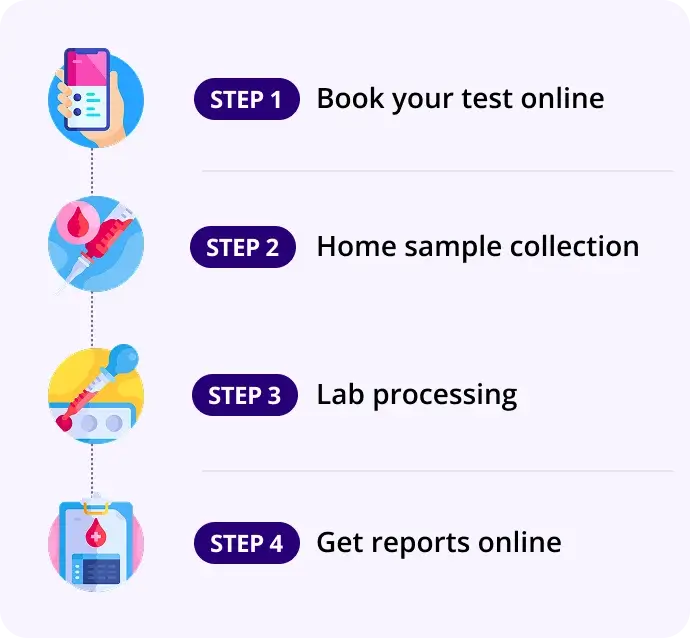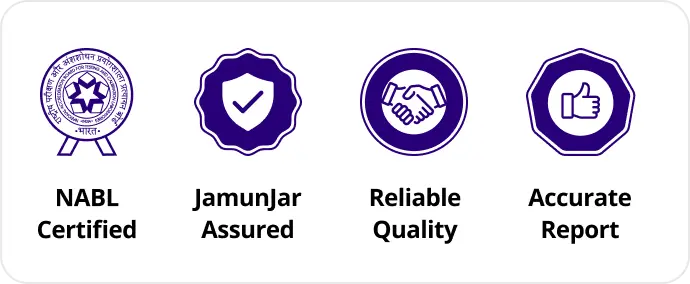Gall bladder - Large Biopsy 3-6 cm
Report in 300Hrs
At Home
Fasting Required
Details
Confirm or rule out malignancy (especially gall bladder carcinoma)
₹699₹1500
53% OFF
🧪 What is a Gall Bladder – Large Biopsy (3–6 cm)?
A gall bladder biopsy involves the surgical removal of a 3–6 cm tissue segment from the gall bladder wall for histopathological examination.
This "large biopsy" is typically obtained during:
- Cholecystectomy (gall bladder removal surgery)
- Open/laparoscopic biopsy of a gall bladder mass or thickening
❓ Why is the Test Done?
To:
- Investigate gall bladder wall thickening or mass lesions
- Confirm or rule out malignancy (especially gall bladder carcinoma)
- Diagnose chronic cholecystitis, xanthogranulomatous cholecystitis, or gall bladder polyps
- Evaluate suspicious imaging findings (e.g., calcified gall bladder, porcelain gall bladder)
- Assess infiltrative diseases or inflammatory conditions
🧠 Associated Organs and Conditions
Organ | Common Conditions |
|---|---|
Gall bladder | - Gall bladder carcinoma (adenocarcinoma) |
Liver (adjacent) | May show local invasion or metastasis in malignancy |
Biliary tract | Associated with choledocholithiasis or cholangiocarcinoma |
🔍 What Does the Pathologist Look For?
- Epithelial dysplasia or malignancy (e.g., adenocarcinoma)
- Granulomatous inflammation, lymphocytic infiltration
- Rokitansky-Aschoff sinuses in chronic cholecystitis
- Foamy histiocytes in xanthogranulomatous cholecystitis
- Calcification or wall fibrosis
📈 Interpretation of Results
Histological Finding | Clinical Significance |
|---|---|
Normal mucosa | No disease |
Chronic cholecystitis | Long-standing inflammation, often with gallstones |
Acute inflammation | Suggests acute cholecystitis or infection |
Xanthogranulomatous changes | Rare, destructive inflammatory condition |
Dysplasia / Carcinoma in situ | Pre-cancerous changes |
Invasive adenocarcinoma | Malignant tumor of gall bladder; aggressive behavior |
🔄 Related / Follow-Up Tests
- Ultrasound / CT / MRI of abdomen – Imaging of gall bladder lesions
- Tumor markers – e.g., CA 19-9, CEA (supportive in malignancy)
- Liver function tests (LFTs) – To assess biliary obstruction
- ERCP / MRCP – Biliary tree evaluation
- PET-CT – For staging in confirmed malignancy
- Bile cytology – If bile was aspirated intraoperatively
✅ Fasting Required?
Test | Fasting Requirement |
|---|---|
Gall bladder biopsy | ✅ Yes, if done surgically — Fasting (6–8 hours) is mandatory for anesthesia or laparoscopic access |
📝 Summary
Parameter | Details |
|---|---|
What | Surgical or laparoscopic removal of a 3–6 cm gall bladder tissue sample |
Why | Rule out malignancy, evaluate chronic inflammation, polyps, or suspicious imaging |
Common Findings | Chronic cholecystitis, adenocarcinoma, xanthogranulomatous inflammation |
Associated Conditions | Gall bladder cancer, gallstones, acute/chronic cholecystitis |
Follow-up Tests | CA 19-9, CEA, imaging (USG, CT, MRI), LFTs, PET-CT |
Fasting Required | ✅ Yes, if done as part of surgery |
How our test process works!

